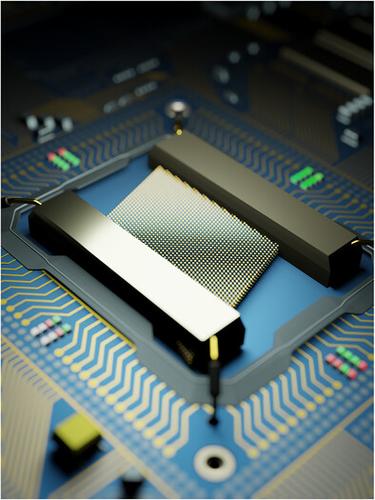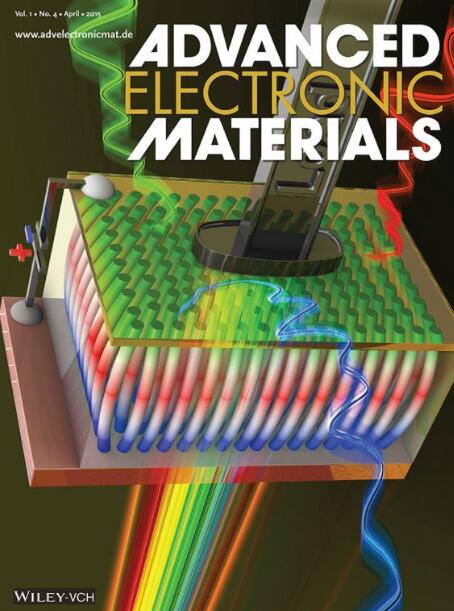真空退火缺陷工程:高性能铟硒光电探测器的精确硒空位控制
IF 5.3
2区 材料科学
Q2 MATERIALS SCIENCE, MULTIDISCIPLINARY
引用次数: 0
摘要
少层硒化铟(InSe)为下一代光电子学带来了希望,但受到缺陷相关的限制。虽然热退火是一种常见的用于调整二维材料性能的合成后技术,但其在InSe中的应用受到缺陷演变和相变之间复杂相互作用的阻碍。在这项工作中,引入了一种低温,高真空退火策略,允许对硒空位进行微调调节,在抑制不必要的相变的同时实现显着的光电改进。通过在真空退火过程中对InSe光电子器件进行测量,证明了真空退火可以作为n型掺杂,并且可以增强迁移率(从1.2到276 cm2 V−1 s−1)和光响应性(从1000到2.3 × 104 A W−1)。通过热力学假设和半定量X射线光电子能谱(XPS)结果,建立了这些性能改进与硒空位浓度的受控增加(从≈2%到≈7%)之间的直接关系。在此基础上,提出了一个能带图模型来解释InSe器件中电荷输运和光电流产生过程的变化。这项工作建立了缺陷工程作为优化InSe器件性能的关键独立参数,为高性能InSe功能器件的制造提供了理论见解和实践指导。本文章由计算机程序翻译,如有差异,请以英文原文为准。

Defect Engineering via Vacuum Annealing: Precise Selenium Vacancy Control for High‐Performance InSe Photodetectors
Few‐layer indium selenide (InSe) holds promise for next‐generation optoelectronics but suffers from defect‐related limitations. While thermal annealing is a common post‐synthesis technique for tuning the properties of 2D materials, its application in InSe is hindered by the complex interplay between defect evolution and phase transitions. In this work, a low‐temperature, high‐vacuum annealing strategy is introduced that allows for fine‐tuned regulation of selenium vacancies, enabling significant optoelectronic improvements while suppressing unwanted phase transitions. By performing measurements on InSe optoelectronic devices throughout the vacuum annealing process, it is demonstrated that vacuum annealing can serve as an n‐type doping, coupled with the enhancement of mobility (from 1.2 to 276 cm2 V−1 s−1 ) and photoresponsivity (from 1000 to 2.3 × 104 A W−1 ). Through thermodynamic hypothesis and semi‐quantitative X‐ray photoelectron spectroscopy (XPS) results, a direct correlation is established between these performance improvements and the controlled increase of Se vacancy concentration (from ≈2% to ≈7%). Based on this, a band diagram model is proposed to explain the change of charge transport and photocurrent generation processes in InSe devices. This work establishes defect engineering as a critical standalone parameter for optimizing InSe device performance, offering both theoretical insights and practical guidelines for the fabrication of high‐performance InSe functional devices.
求助全文
通过发布文献求助,成功后即可免费获取论文全文。
去求助
来源期刊

Advanced Electronic Materials
NANOSCIENCE & NANOTECHNOLOGYMATERIALS SCIE-MATERIALS SCIENCE, MULTIDISCIPLINARY
CiteScore
11.00
自引率
3.20%
发文量
433
期刊介绍:
Advanced Electronic Materials is an interdisciplinary forum for peer-reviewed, high-quality, high-impact research in the fields of materials science, physics, and engineering of electronic and magnetic materials. It includes research on physics and physical properties of electronic and magnetic materials, spintronics, electronics, device physics and engineering, micro- and nano-electromechanical systems, and organic electronics, in addition to fundamental research.
 求助内容:
求助内容: 应助结果提醒方式:
应助结果提醒方式:


